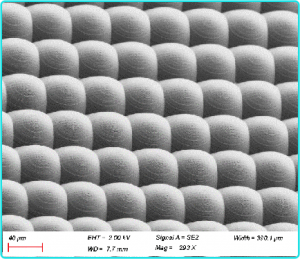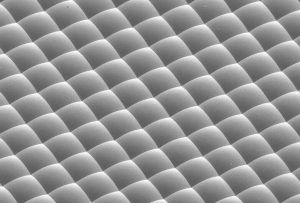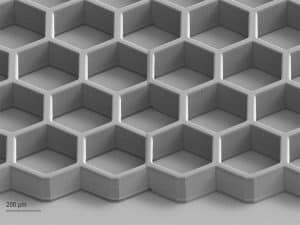
Thin Film Preparation - Epitaxy
Most materials exist in an amorphous, crystalline or polycrystalline state. Their mechanical, optical, thermal and electrical properties also vary depending on their state.
For example, carbon in its amorphous form is a black powder, while in its crystalline form it is a diamond and optically transparent solid with a high refractive index. In its amorphous form, silicon dioxide is a white powder, and in its crystalline form, it is quartz.
Because crystalline films are more difficult to produce, amorphous films are used as long as they are not performing adequately for the application. This is the case with optical coatings, where most films can have excellent reliability and reproducibility of refractive index, even in a random amorphous state. Metallic films are also used in amorphous form because their electrical conductivity and optical reflectivity can be reliably reproduced. The main difference between amorphous and crystalline materials is their electronic energy band structure. Amorphous materials do not have a distinct energy band structure due to their random orientation; crystalline structures can.
A crystalline thin film can only be grown on a substrate whose lattice structure closely matches that of the film being grown. If the substrate is the same as the film, it is called homogeneous epitaxy. If the substrate is slightly different but still compatible, it is called heterogeneous epitaxy.
In addition to common silicon, epitaxy is most widely used in IIIeV semiconductors such as GaAs, InP, InAs, etc. Many IIIeV semiconductors exhibit interesting properties in which their energy band structure can be tuned by including other elements (e.g. GaxAl1 xAs) without significantly changing their original crystal structure. This allows epitaxial layers with different electronic band structures to be stacked on top of each other. This is heterogeneous epitaxy and is becoming commonplace in optoelectronic devices such as laser diodes, light emitting diodes (LEDs) and quantum well devices.
Metal Organic CVD
Metal Organic CVD (MOCVD) is a CVD process used to grow epitaxial films, much like LPCVD, by flowing a precursor gas over a substrate. In IIIeV semiconductors, metallic elements are carried by organic gases such as trimethyl gallium (Ga(CH3)3) and trimethyl indium (In(CH3)3) as well as arsine (AsH3) or phosphine (PH3). Due to pyrolysis on the heated substrate surface, the gases are allowed to decompose to produce the desired film. Process pressures are typically in the range of 10e100 Torr, resulting in relatively fast growth rates. A drawback of MOCVD is the toxicity and explosive nature of the precursor gases, which makes them difficult to use in small research laboratories. However, MOCVD is a scalable process suitable for volume manufacturing because many substrates can be placed in the chamber at the same time. As a result, it is widely used to fabricate quantum well lasers, LEDs, and other components.
Molecular beam epitaxy
While MOCVD is similar to LPCVD, molecular beam epitaxy (MBE) can be thought of as similar to PVD evaporation and is performed in ultra-high vacuum. This makes MBE more suitable for applications that require very high purity levels. Solid sources such as gallium or indium from different accumulation cells are usually allowed to sublimate and condense on the substrate. These cells are closed to allow a fast and accurate transition from one material to another. The high vacuum environment also allows the use of multiple diagnostic tools during the growth process. Many MBE systems use reflected high-energy electron diffraction (RHEED) to monitor the growth process and are able to count monolayers as they grow. The source configuration also makes the system far less hazardous than MOCVD. Chemical beam epitaxy is a variation of MBE in which a gas source is used instead of a solid source, but the principles are very similar. Compared to MOCVD, the biggest disadvantage of MBE is the slow growth rate and the inability to grow many wafers at the same time. Nevertheless, it is more widely used than MOCVD to study the fundamental properties of epitaxial film growth in research facilities and in some limited production environments.
We offer fastMEMS device / micro and nanostructure processing design services, Feel free to leave a message to inquire.


